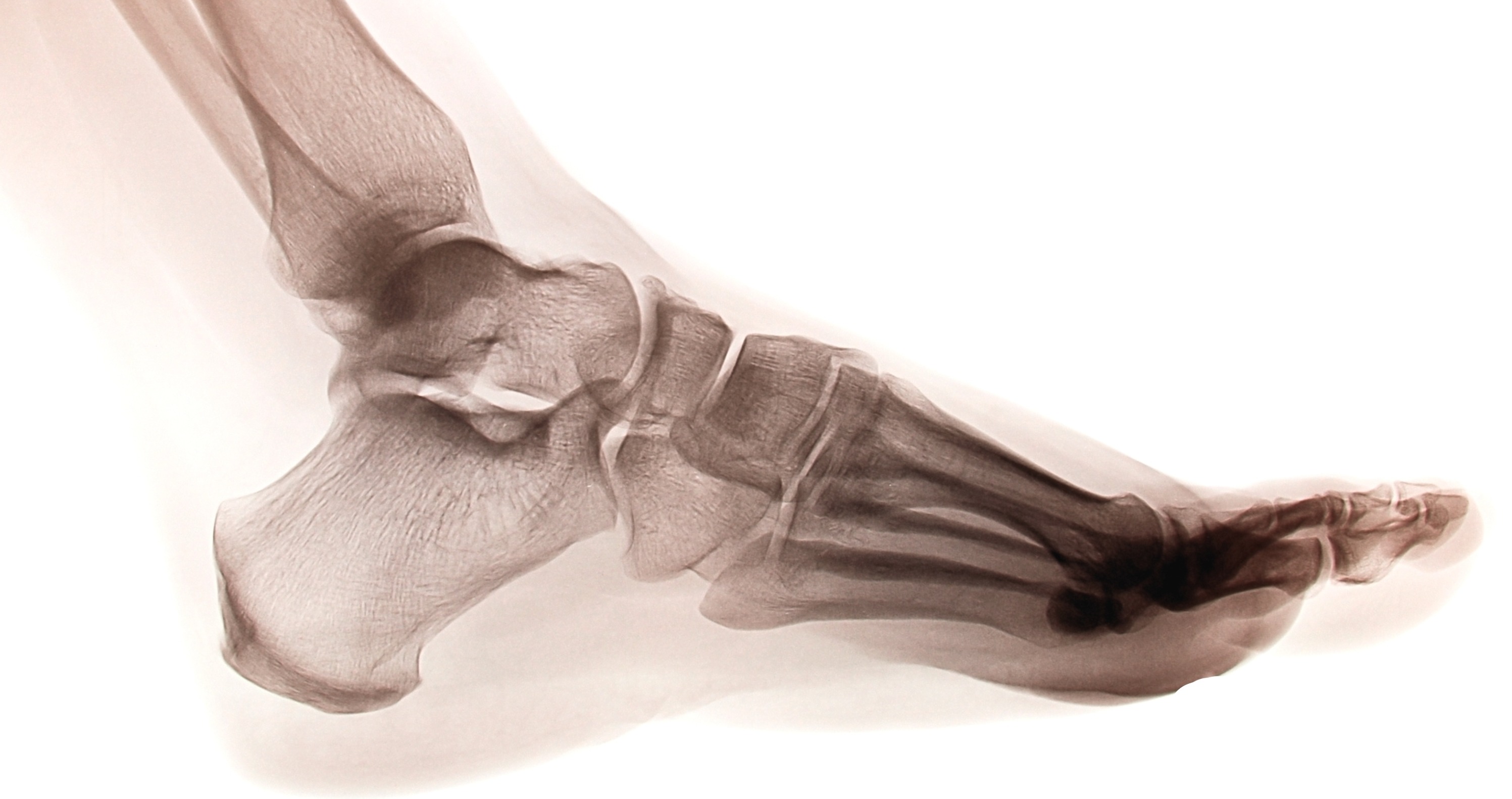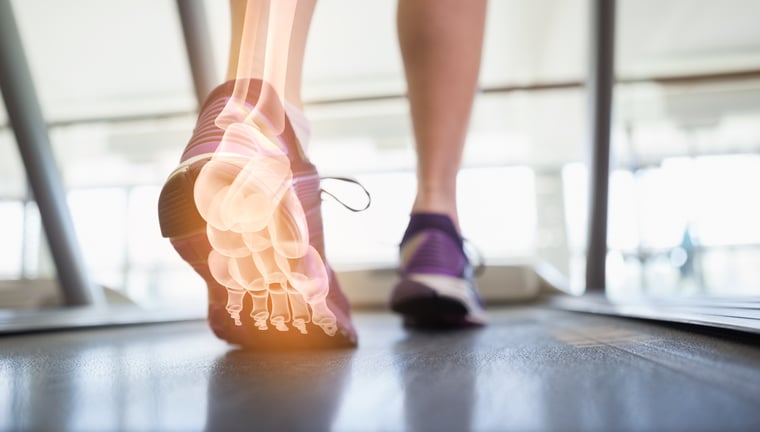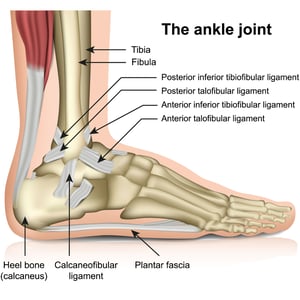
The Complete Guide to Foot and Ankle Biomechanics: Optimizing Human Movement and Performance
To maximize performance and increase speed, start at the body's foundation—the feet.
The way people move their bodies is an integral part of the human experience. Human movement infiltrates nearly every aspect of daily life, and the quality of that movement matters—for the track star working to achieve record-breaking speed, but also for the teacher who is on her feet all day. For most people, the ability to walk and run efficiently depends on proper foot biomechanics.
Foundational knowledge of foot and ankle biomechanics is key to maximizing human performance. The way that a certain joint flexes or a particular bone slides can reveal important information about movement efficiency, injury risk, and performance potential. Understanding the biomechanical processes involved, starting with comprehensive foot and ankle biomechanics analysis, makes it possible to accurately measure and optimize a person's gait.
What is Gait and Why Does Foot Biomechanics Matter?
Before diving into the specifics of foot and ankle biomechanics, it's essential to understand gait itself—the coordinated pattern of movement that allows humans to walk and run. Gait analysis reveals significant information about a person, from the speed and efficiency of their movement to their risk of injury during athletic activities.
The biomechanics of the foot play a central role in gait quality. Poor foot biomechanics can lead to:
- Decreased athletic performance
- Increased energy expenditure during walking
- Higher risk of lower extremity injuries
- Compensatory movement patterns affecting the entire kinetic chain
With the ability to understand and measure foot and ankle movement patterns, medical professionals and athletic trainers can support their clients in achieving several goals, such as maximizing speed, improving movement efficiency, or correcting poor biomechanics to prevent or treat injury.
Despite appearing simple, human gait is remarkably complex in practice, involving multiple stages and phases of coordinated movement. The biomechanics of feet and ankles serve as the foundation for this entire process, making their proper function critical for optimal human movement.

The Anatomy Behind Foot and Ankle Biomechanics
To comprehend the biomechanics of the foot and ankle, you must first understand the intricate structure that enables movement. The foot is divided into three main anatomical regions: the hindfoot, midfoot, and forefoot—each playing a unique role in foot biomechanics.
Hindfoot Biomechanics
The hindfoot, located immediately under the ankle joint, forms the posterior foundation of foot biomechanics. This region consists primarily of two crucial tarsal bones:
- Talus: The primary bone connecting the foot to the lower leg
- Calcaneus: The heel bone that bears initial ground contact forces
The hindfoot's biomechanical function centers around the subtalar joint, which allows for inversion and eversion movements crucial for adapting to uneven surfaces and absorbing impact forces.
Midfoot Biomechanics
The midfoot contains five additional tarsal bones that contribute significantly to the biomechanics of the foot:
- Navicular bone
- Cuboid bone
- Three cuneiform bones (medial, intermediate, and lateral)
The junction between the midfoot and hindfoot, known as Chopart's joint, plays a vital role in foot biomechanics by allowing the foot to adapt its shape during different phases of gait.
Forefoot Biomechanics
The forefoot includes the metatarsals, phalanges, and sesamoid bones. The Lisfranc joint, where the midfoot and forefoot meet, is crucial for push-off mechanics during the propulsive phase of gait.
The complete foot structure encompasses:
- 28 bones working in coordination
- 112 ligaments providing stability
- 33 joints enabling complex movement patterns
- 34 muscles generating and controlling motion
This intricate network demonstrates why foot and ankle biomechanics are so complex and why small dysfunctions can have significant impacts on overall movement quality.
Understanding Ankle Joint Biomechanics
The ankle joint biomechanics involve several key articulations that work together to produce fluid movement:
Tibiotalar Joint (True Ankle Joint)
The tibiotalar joint is the primary component of ankle biomechanics, allowing for:
- Plantarflexion: Pointing the foot downward (normal range: 50-55 degrees)
- Dorsiflexion: Pulling the foot upward toward the shin (normal range: 15-20 degrees)
These movements are essential for proper foot clearance during swing phase and controlled lowering during heel strike.
Subtalar Joint Complex
The subtalar joint contributes to ankle and foot biomechanics through:
- Inversion: Turning the sole of the foot inward (normal range: 30-35 degrees)
- Eversion: Turning the sole of the foot outward (normal range: 15-20 degrees)
Transverse Tarsal Joint
This joint complex aids in foot biomechanics by:
- Facilitating forward progression during gait
- Contributing to shock absorption mechanisms
- Enabling heel rise during push-off
The Phases of Gait: Detailed Foot Biomechanics Analysis
Understanding how foot biomechanics function throughout the gait cycle is essential for identifying dysfunction and optimizing movement patterns.
Stance Phase Biomechanics (60% of Gait Cycle)
The stance phase involves four distinct sub-phases, each with specific foot and ankle biomechanics requirements:
1. Loading Response (0-10% of gait cycle)
- Initial heel contact with plantarflexion
- Rapid transition to dorsiflexion for shock absorption
- Subtalar joint eversion to adapt to the ground surface
- Eccentric muscle activation for controlled lowering
2. Midstance (10-30% of gait cycle)
- Foot becomes a stable platform for single-limb support
- Ankle moves from dorsiflexion toward neutral
- Intrinsic foot muscles maintain arch integrity
- Center of pressure progresses from heel toward forefoot
3. Terminal Stance (30-50% of gait cycle)
- Heel begins to lift as body moves forward over the foot
- Ankle transitions into plantarflexion
- Foot biomechanics shift from mobile adapter to rigid lever
- Windlass mechanism activates to stiffen the longitudinal arch
4. Pre-swing (50-60% of gait cycle)
- Active plantarflexion propels the body forward
- Rapid unloading of the foot
- Preparation for limb advancement
Swing Phase Biomechanics (40% of Gait Cycle)
During swing phase, foot and ankle biomechanics focus on:
- Adequate dorsiflexion for ground clearance
- Positioning the foot for the next heel strike
- Minimal energy expenditure while maintaining proper alignment
Common Foot Biomechanics Problems and Their Impact
Understanding typical biomechanical dysfunction helps identify when foot and ankle biomechanics assessments are needed:
Overpronation
Excessive or prolonged pronation affects foot biomechanics by:
- Reducing the foot's ability to become a rigid lever
- Increasing stress on medial structures
- Contributing to overuse injuries in the lower extremity
Underpronation (Supination)
Insufficient pronation compromises foot biomechanics through:
- Decreased shock absorption capacity
- Increased lateral loading patterns
- Higher risk of stress fractures and lateral ankle sprains
Ankle Joint Restrictions
Limited ankle dorsiflexion alters foot and ankle biomechanics by:
- Forcing compensatory movement patterns
- Increasing forefoot loading during midstance
- Contributing to heel lift during squatting movements
Biomechanical Assessment Techniques for Foot and Ankle Function
Professional assessment of foot and ankle biomechanics typically involves several evaluation methods:
Static Assessment
- Postural alignment analysis: Evaluating foot position in standing
- Range of motion testing: Measuring ankle and foot joint mobility
- Structural assessment: Identifying anatomical variations
Dynamic Assessment
- Gait analysis: Observing walking and running biomechanics
- Pressure mapping: Analyzing force distribution patterns
- Video analysis: Documenting movement patterns for detailed review
Clinical Tests
- Windlass test: Assessing plantar fascia function
- Single-leg heel rise: Evaluating posterior muscle strength
- Navicular drop test: Measuring arch collapse during loading
How Biomechanics of the Foot Affect Athletic Performance
The main players in the biomechanics of the foot and ankle are the tibiotalar joint and the transverse tarsal joint. The tibiotalar joint, otherwise known as the ankle joint, is what allows the foot to move up and down with help from the muscles in the front and back of the leg. The transverse tarsal joint is what helps movement go forward, and aids with shock absorption and heel rise. The tendon attached to the joining helps the bone move, and when it’s not moving (i.e., absorbing shock), it locks.
When it comes to the muscles, the anterior compartment muscles help to extend the joint. In turn, the posterior muscles (including the calf muscles) help to flex the joint. When there are problems with these muscles, athletes and patients may experience anything from flat feet to Achilles tendon ruptures, reminding us that the proper functioning of every bone, muscle and joint is important.
XSENSOR: Advanced Technology for Measuring Foot and Ankle Biomechanics
The biomechanics of the foot and ankle serve as the foundation for all human movement. From the complex coordination of 28 bones and 33 joints to the precise timing of muscle activation patterns, every aspect of foot biomechanics contributes to our ability to move efficiently and effectively.
Understanding these biomechanical principles—whether you're a healthcare professional, athletic trainer, or movement enthusiast—provides the foundation for optimizing human performance, preventing injury, and enhancing quality of life.
At XSENSOR, we understand that comprehensive foot and ankle biomechanics analysis requires precise measurement tools. Our dynamic sensing technology assists in many positive outcomes—from maximizing comfort to preventing injury to improving speed.
XSENSOR’s sensor solutions include:
- intelligent insole sensors
- walkway sensors, and
- stance pad sensors.
Ready to dive deeper into the world of movement analysis? Discover how XSENSOR's cutting-edge technology can revolutionize your approach to foot and ankle biomechanics assessment.


